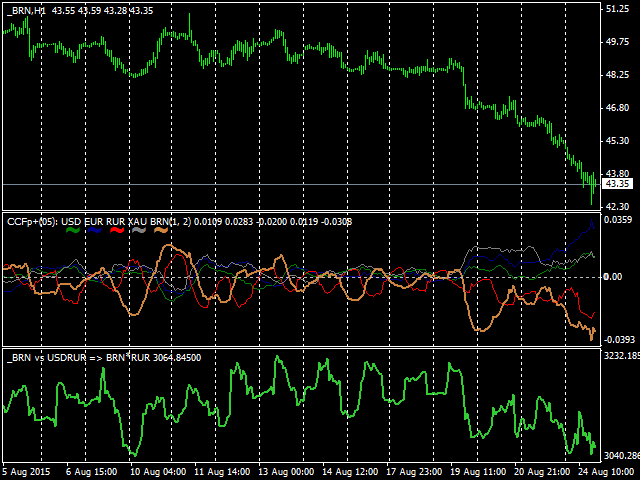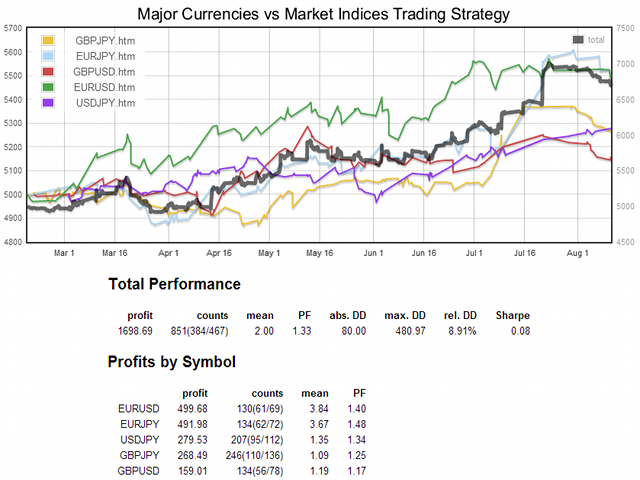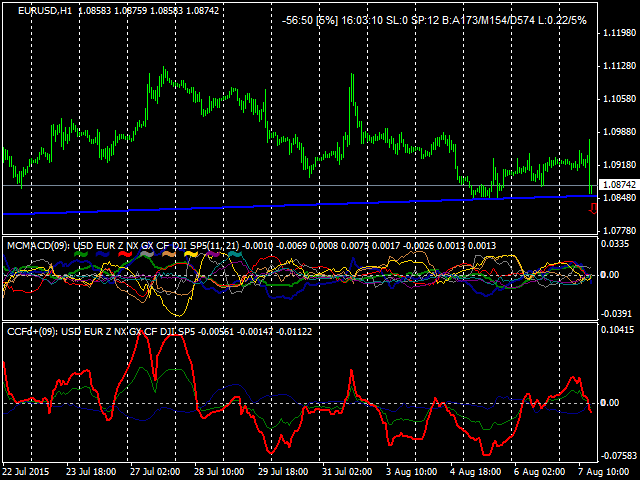Stanislav Korotky / Perfil
- Información
|
11+ años
experiencia
|
97
productos
|
140
versiones demo
|
|
0
trabajos
|
0
señales
|
0
suscriptores
|
New:
AngryVolumes - (MT5) https://www.mql5.com/en/market/product/96161
VolumeDeltaPercentRange - (MT5) https://www.mql5.com/en/market/product/62190
PnFxo - (MT5) https://www.mql5.com/en/market/product/61592
MACD Advanced - (MT5) https://www.mql5.com/en/market/product/61515
PFKBreakOut - (MT5) https://www.mql5.com/en/market/product/61170
PointFigureKagiCharts - (MT5) https://www.mql5.com/en/market/product/61168
PointFigureKagiCharts - [demo] https://www.mql5.com/en/market/product/61169
CustomVolumeDelta - (MT5) https://www.mql5.com/en/market/product/60798
RenkoFromRealTicks - (MT5) https://www.mql5.com/en/market/product/60797
RenkoFromRealTicks - [demo] https://www.mql5.com/en/market/product/60824
UniversalDashboard - (MT5) https://www.mql5.com/en/market/product/59610
VolumeDeltaWaves - (MT5) https://www.mql5.com/en/market/product/54183
AutomaticZigZag - (MT5) https://www.mql5.com/en/market/product/54123
VolumeDeltaScanner - (MT5) https://www.mql5.com/en/market/product/53549
ADXSignal - (MT5) https://www.mql5.com/en/market/product/50861
CyclicPatterns - (MT5) https://www.mql5.com/en/market/product/40547
Latest Updates:
WalkForwardOptimizer 1.15 - (MT5) https://www.mql5.com/en/market/product/23068
TrueVolumeSurrogate 1.4 - (MT5) https://www.mql5.com/en/market/product/18319
VolumeDeltaM1 1.6 - (MT5) https://www.mql5.com/en/market/product/18307
Most popular products, user choice:
VolumeDelta
+ (MT4) https://www.mql5.com/en/market/product/5102
+ (MT5) https://www.mql5.com/en/market/product/18307
CumulativeVolumeDeltaBars
+ (MT4) https://www.mql5.com/en/market/product/18285
+ (MT5) https://www.mql5.com/en/market/product/18238
TrueVolumeSurrogate
+ (MT4) https://www.mql5.com/en/market/product/5380
+ (MT5) https://www.mql5.com/en/market/product/18319
WalkForwardOptimizer
+ (MT4) https://www.mql5.com/en/market/product/17683
+ (MT5) https://www.mql5.com/en/market/product/23068
VolumeDeltaM1
+ (MT4) https://www.mql5.com/en/market/product/13353
+ (MT5) https://www.mql5.com/en/market/product/18307
OnBalanceVolumeSurrogate
+ (MT4) https://www.mql5.com/en/market/product/8531
+ (MT5) https://www.mql5.com/en/market/product/18320
OrderBook History Library
+ (MT5) https://www.mql5.com/en/market/product/30681
RenkoTradingBot
+ (MT4) https://www.mql5.com/en/market/product/9170
ADXS/ADXSignal
+ (MT4) https://www.mql5.com/en/market/product/5052
+ (MT5) https://www.mql5.com/en/market/product/50861
Please note: if I'm banned due to inadequate judgment of specific MetaQuotes' staff, my actions on the site are very limited and I can not afford proper support for my products.
The indicator calculates WPR formula on volume-aware indicators Accumulation/Distribution , OnBalance Volume , or Price Volume Trend . WPR range is moved into positive domain [0..1] for convenience. Parameters WPR - period of WPR, by default 24; Base - type of the underlying indicator: AccumulationDistribution (by default), OnBalanceVolume, or PriceVolumeTrend; Price - applied price type for OBV and PVT, by default - Close; it's ignored in case of AD; Screenshots On the screenshots
This indicator provides you with MACD formula applied to volume-aware Accumulation/Distribution and OnBalance Volumes indicators. In addition to tick volumes it supports special pseudo-real volumes, synthesized for Forex symbols where real volumes are unknown. More details on the volume surrogates may be found in description of another indicators - TrueVolumeSurrogate and OnBalanceVolumeSurrogate (algorithm of the latter is used internally in MACDAD for AD and OBV calculation before they proceed
MCAD stands for M ulti C urrency A ccumulation/ D istribution, so please don't confuse it with the well-known MACD. MCAD calculates relative strengths of Accumulation/Distribution of volumes for plain Forex currencies (that is their synthetic behaviour extracted from Forex pairs), market indices, CFDs and other groups of tickers. It uses standard Accumulation/Distribution formula ( Wikipedia's article ) and can apply it either to tick volumes, or to pseudo-real volumes ( volume surrogates
MultiCurrencyWPR (MCWPR) indicator applies conventional WPR formula to plain Forex currencies (that is their pure strengths extracted from Forex pairs), market indices, CFDs and other groups of tickers. It uses built-in instance of CCFpExtraValue to calculate relative strengths of selected tickers. Unlike standard WPR calculated for specific symbol, this indicator provides a global view of selected part of market and explains which instruments demonstrate maximal gain at the moment. It allows
This indicator builds so called "random walk" bands: on every bar it finds maximal or average distance between current price and multiple expanding parabolic curves starting at predefined number of bars in the past. If you like Bollinger bands or Envelopes you may find this indicator useful as well. As you may know, price movements are very similar to random walk time series (specifically, Gaussian random walk), yet they do effectively break the hypothesis of randomness. One of the features of
The indicator compares quotes of the current symbol and a synthetic quote calculated from two specified referential symbols. The indicator is useful for checking Forex symbol behavior via corresponding stock indices and detecting their convergence/divergence which can forecast future price movements. The main idea is that all stock indices are quoted in particular currencies and therefore demonstrate correlation with Forex pairs where these currencies are used. When market makers decide to "buy"
This indicator provides the analysis of tick volume deltas. It calculates tick volumes for buys and sells separately, and their delta on every bar, and displays volumes by price clusters (cells) within a specified bar (usually the latest one). This is a limited substitution of market delta analysis based on real volumes, which are not available on Forex. The indicator displays the following data in its sub-window: light-blue histogram - buy (long) volumes; orange histogram - sell (short)
This is yet another non-parametric ZigZag. Its every upward edge continues until next bar's high is formed below highest low of its bars, and every downward edge continues until next bar's low is formed above lowest high of its bars. In addition to zigzag itself (shown in orange color), the indicator shows signal marks on those bars where zigzag direction changes. The blue arrow up denotes that new bullish edge is started (but not yet completed), whereas the red arrow down denotes that new
TrafficLight provides simple trading buy and sell signals. The indicator shows reversal points and ambiguous points on current chart using cross rates. Only completed bars are counted. Buys are denoted by green arrows, sells - by red arrows. Yellow diamonds denote bifurcation points. Distance to the arrows relatively to the current price is a measure of volatility on the cross rates, and can be used as future price movement estimate for the work symbol. Due to the fact that indicator is












